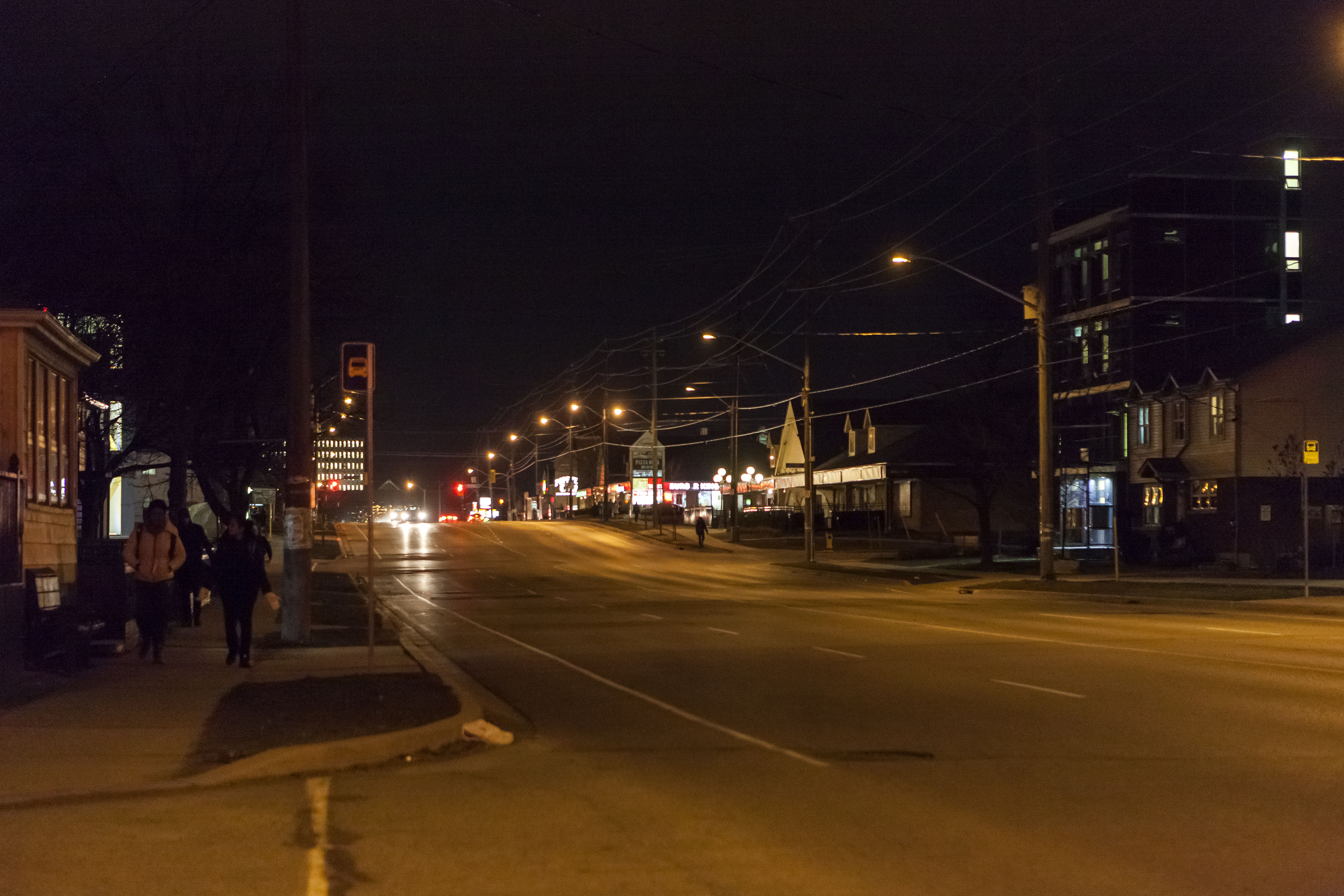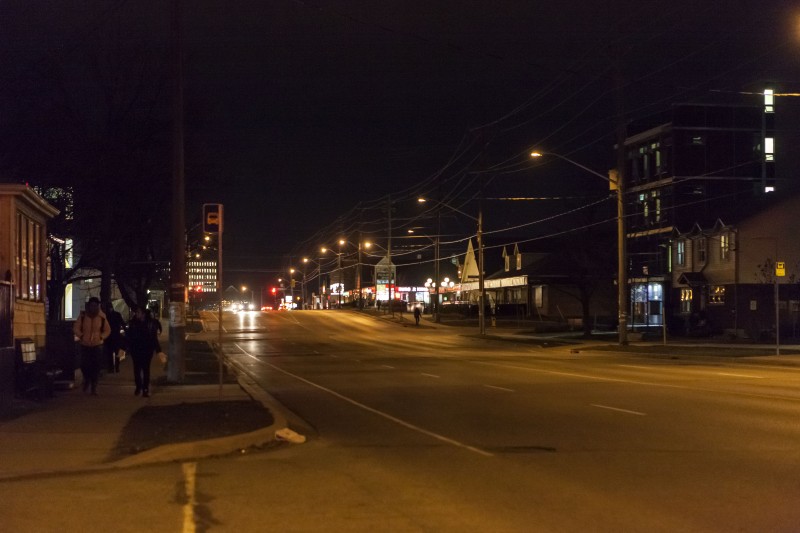University Ave. lighting a concern

With the days getting shorter, students and residents in Waterloo find themselves walking and driving more frequently in the dark, posing more of a chance for issues stemming from impaired visibility.

Many students are worried that University Avenue West is dark and dangerous at night due to the few sections that have streetlights on both sides of the road, like the one pictured above.
With the days getting shorter, students and residents in Waterloo find themselves walking and driving more frequently in the dark, posing more of a chance for issues stemming from impaired visibility. The stretch of University Avenue West from Wilfrid Laurier University to the University of Waterloo is notoriously busy with both vehicles and pedestrians, who have expressed concerns about safety after dusk.
Emerson Diodati is a second-year business student at Laurier who says the dim lighting along University Ave. W. has been a noticeable concern for him.
“I live off campus so I have to wait for the bus sometimes at 11 or 12 at night, and seeing cars come down its sort of scary because you don’t know if they see you because it’s not lit up,” he said.
Kelly Eitel, engineering technologist at the Region of Waterloo, explained eight years ago the region approved an illumination policy which directs the placement of street lighting on roads. One of the stipulations, for example, is that any road that has a bus route, bus stops and a sidewalk must have streetlights on it.
Currently, University Ave. W. only has streetlights down one side of it. According to Eitel, the policy stipulates that streetlights are only placed on both sides of roads that have five lanes or more.
“In some locations like when they have the centre split lanes, the left turn lanes and things like that, that would warrant putting illumination on both sides,” he said.
Accordingly, some sections of University Ave. W. that have additional lanes could qualify to have lighting on both sides. However updates such as these only take place when the road undergoes reconstruction or if it becomes a priority due to things like a frequency of nighttime collisions.
“No scheduled work is going to be done between Westmount and King in the next 10 years,” Eitel said.
This means extra streetlights will not get added to these sections of University Ave. W. that don’t meet policy until this time or unless there is an increase in collisions or complaints.
“I’m not sure about University Ave. itself,” Eitel said, when asked about whether he has received complaints. “I can’t recall any complaints. But definitely yes we get complaints about lighting all the time.”
“We put areas into priority and we have prioritized them — walking pathways to schools, nighttime collisions, pedestrian collisions and things like that so in each year we do some street lighting work that needs it. But there’s a lot of places that need it so we have to prioritize and then it’s going to take some time.”
Reid Midanik, a fourth-year kinesiology student at Laurier, reported experiences where vehicles did not see him at nighttime. His concern is that cars go quite quickly along University Ave. W. and it is heavily used.
“I remember recently I was crossing at King and University cross walk, I wasn’t even jaywalking, I don’t know if it was dark or if he just wasn’t paying attention, but it was actually a cab driver and I was able to reach out and smack his side window with my hand,” he said. “And he just continued driving. It definitely wasn’t very comforting.”
Midanik said he would like to see more streetlights be put up.
Fourth-year Laurier psychology student, Matthew Soukas, said he used to live on Hazel Street and within three weeks was almost hit by cars while crossing the street on five occasions.
“About four of them were at night and one of them someone just wasn’t paying attention,” he said. “I agree, lights do help, especially on University Avenue.”
However even if there were complaints or a number of collisions along University Ave. W., if the section of road in question meets policy, no additional lights will be put up.
“There’s nothing I can do about it if it meets our policy,” Eitel said.


